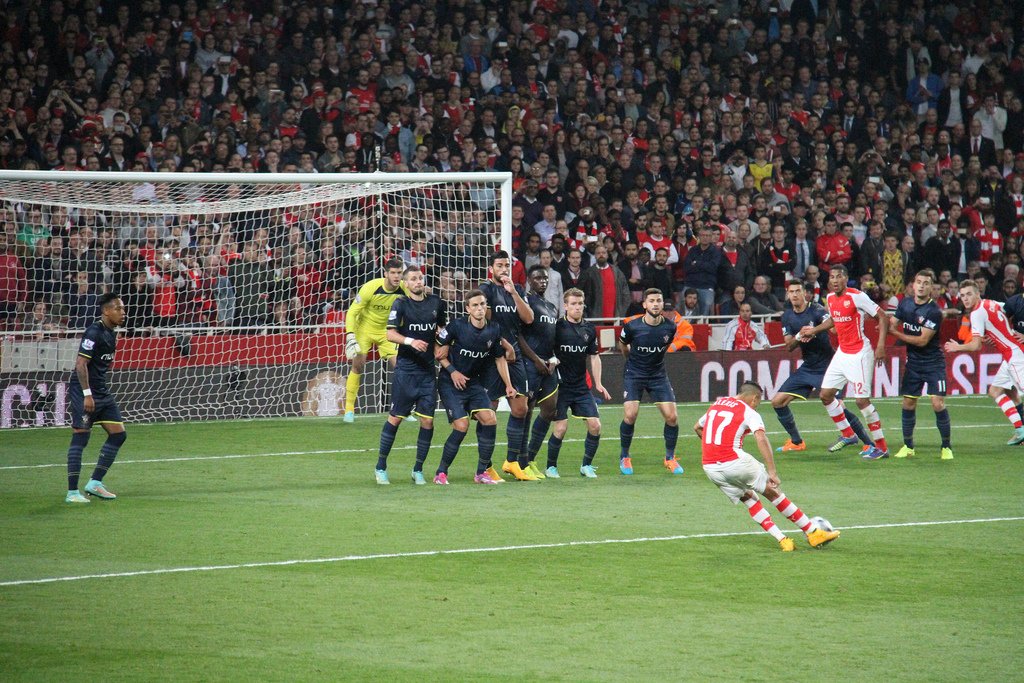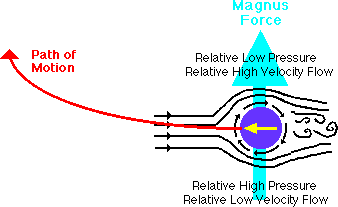The Magnus effect can be used to its full potential in various ball games; for example football. When taking a free kick, the player can apply spin to the ball which can be used to confuse the goalkeeper or bend it around the wall. Having said that, how does applying this spin affect the movement of the ball?

To understand this we must understand the Magnus effect. What is it?
The Magnus effect is basically how a spinning object behaves in the air. Generally speaking, when something is spinning, it tends to drag air faster around one side of it which creates a pressure difference. This pressure difference changes the path of motion of the object, towards the low pressure side. This force that changes the path of an object is called the Magnus force.
Referring back to taking a free kick; if the player adds top spin to the ball (where the top surface of the ball spins forward) the Magnus force acts downwards which makes the ball dip. If mastered properly and the player gives the ball enough top spin; he can hit the ball higher than usual, tricking the goal keeper to think the ball is going over the bar, and before he knows it, the ball dips into the back of the net.
Pretty neat, right?
Same applies with:
Back spin: the Magnus force acts upwards thus making the ball travel up (before gravity takes over and brings it to the ground).
Left spin: the Magnus force acts right thus making the ball travel right
Right spin: the Magnus force acts left thus making the ball travel left (as shown in the free kick taken in the first image)
Therefore practising this can help you determine the path of the ball, thus, executing the perfect free kick.

The Magnus effect is seen over and over due to it having many applications. It is important in different ball sports which involve a spinning ball. It is also used in the design of rotor ships and Flettner aeroplanes, where the rotor is composed of a spinning cylinder, which spins backwards to allow the plane to be lifted up into the air.
On an additional note: this video shows a great example of the Magnus effect in action. You can see the basketball pretty much fly just by adding a tiny bit of back spin as it is being thrown. At 28 seconds of this video you can see he drops the ball without spin, then he proceeds to do it with a tiny bit of spin and just see for yourself the Magnus effect in action!
The reason the ball seems to 'fly' is because the Magnus force acts upwards since the spin the ball was given was backwards. See the correlation?
If you enjoyed this please feel free to leave me some feedback, and until next time, take care. MystifactPrevious 'The More You Know' posts:
The More You Know #1 - How to lose weight if you are 100% desperate
The More You Know #2 - Bees have spidey senses!
The More You Know #3 - The Human Race in a Sugar Cube?
The More You Know #4 - Human vs. Hydrogen Bomb


